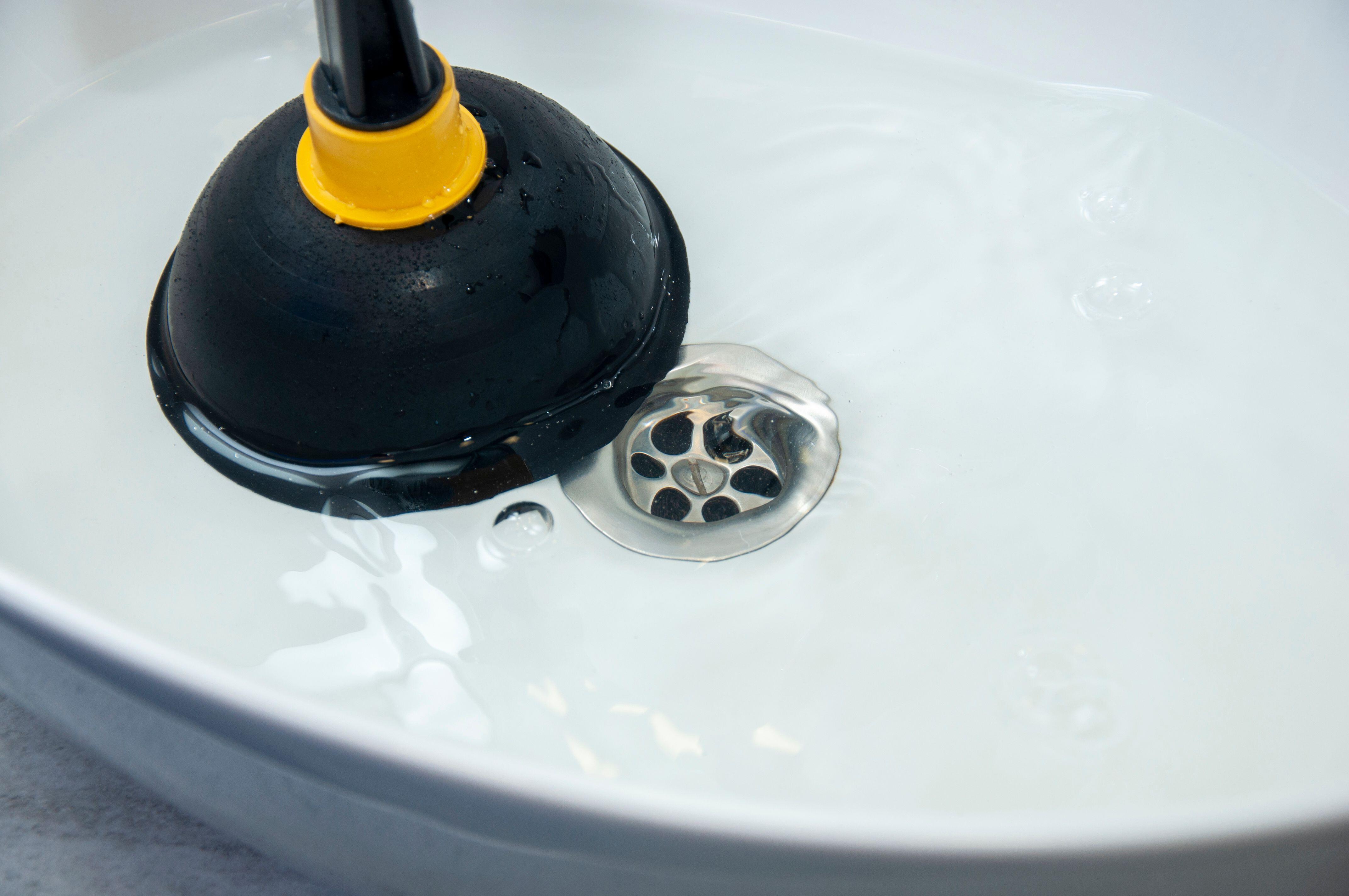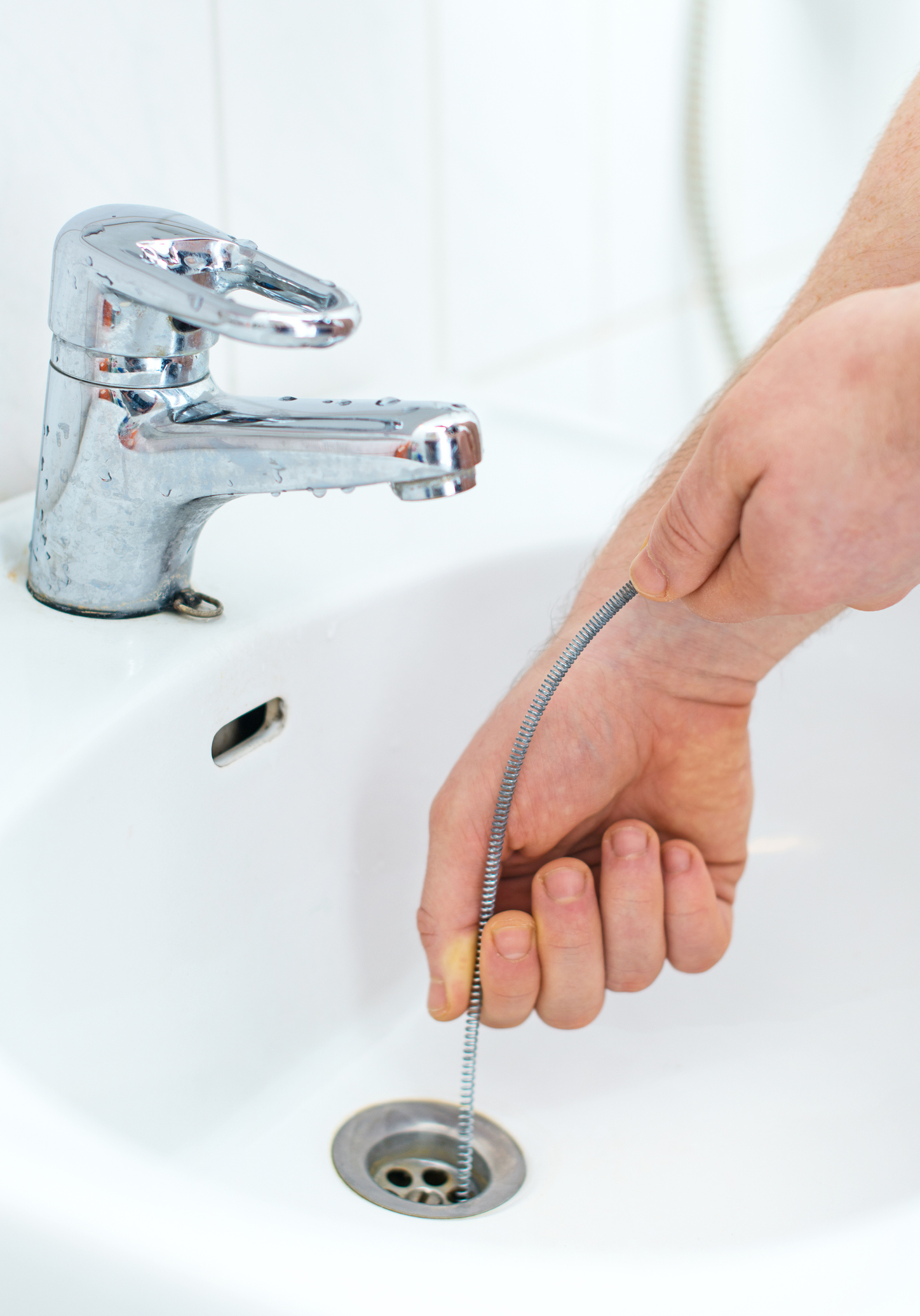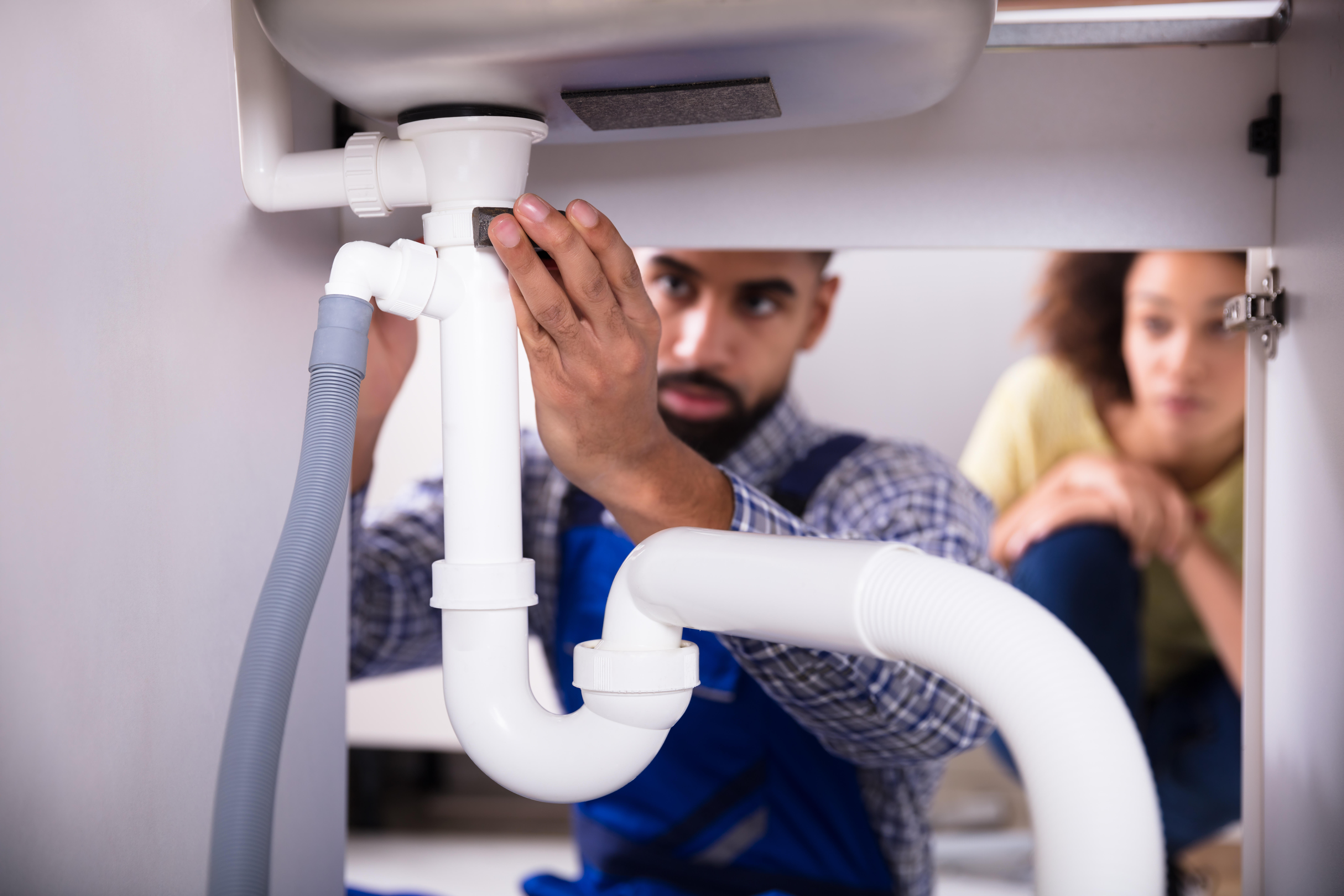How to unclog a sink – in six simple steps
Sink not draining? Find out how to fix a clogged sink, and keep it running freely with our easy expert guide


There is nothing glamorous or exciting about unclogging a sink, but fixing it yourself, without the effort or expense of calling in a plumber, is undoubtedly satisfying. A freely running sink is also easier to keep hygienically clean, which is always preferable where we wash or prep food.
Assuming there are no obvious visible obstructions, the first indication that your sink might be blocked usually comes when you pull out the drain stopper and the water takes an age to drain away. A clogged sink may also become noticeably malodorous, or gurgle in an unusual manner when draining.
A build-up of grease, food and other debris can cause a kitchen sink to back up; similarly, a bathroom sink can quickly become clogged with debris and toothpaste. The process is often so gradual that it only comes to your attention when the blockage has set firm. It’s tempting to ignore a clogged sink but doing so will often make matters far worse. Just like unclogging a toilet, swift action is the best remedy.
How to unclog a sink
There are a number of reasons why your sink won’t drain, but fixing a clogged sink is never as bad a job as it first seems. ‘Before dialling a plumber, there are several easy methods you can try to unclog a sink first, which could save you time, money and effort,’ reassures David Cruz, plumbing expert at MyJobQuote.
1. Put the kettle on
‘When hair, grease, soap residue and other small waste clog up your sink, boiling water is often the quickest solution to undo the blockage,’ says Ben Chalk, construction manager, GIR Services. ‘Use a kettle to heat the water, pour the boiling water directly into the drain opening.’ Aim for at least half a gallon of water, or the maximum capacity of your kettle, and take care to avoid being scalded by splashes or steam.
‘Next, turn on the faucet to see if the water drains. If the drain is still draining slowly or the water doesn’t drain, repeat the process once. If the problem persists, then the blockage is too stubborn for the boiling water method.’
2. Reset the garbage disposal unit
If you’ve been a little over-zealous when feeding an electric waste disposal unit fitted to your sink, it could be the source of your blockage. Happily, unclogging a garbage disposal is often an easy fix that requires removing the offending obstacle, with the machine turned off of course, and then restarting.
‘If your food waste disposer won't run you may need to reset it using the overload protector button on the bottom,’ adds Marco Pastore, product manager, InSinkErator. ‘If the food waste disposer is clogged, if it is run for a very long period of time, if it overheats, or if there is something wrong with the disposer, it will shut down automatically and need to be reset.’
3. Unclog a sink with baking soda
As well as being a great solution for cleaning a kitchen sink, baking soda can also be used to unclog a sink. If boiling water hasn’t done the trick, and the waste disposal unit isn’t to blame, adding a dose of baking soda should be your next step. Regular cleaning with baking soda and (cleaning with vinegar too) can also help prevent the grease and food deposits that cause your sink to clog in the first place.
Mix one cup of baking soda (sodium bicarbonate) with one cup of white vinegar and pour it down the sink. Add a squeeze of dish soap for extra grease-busting power. Pop the plug in and leave the mixture to work its magic for around five minutes.
Once the fizzing sound has subsided, flush another half-gallon of boiling water down the sink. If the blockage begins to clear, keep adding boiling water and then regular hot water from the faucet until normal service has resumed.
4. Get out the plunger
Plungers essentially suction up water, with the aim of releasing blockages in the process, so knowing how to use a plunger can rescue things in a range of scenarios. To unclog a sink, you’ll need a flat cup plunger, rather than a toilet plunger, which are again widely available at hardware stores.
Start by filling the sink with water, an inch or two deep should do. You’re just looking to cover the seal where the plunger meets the sink bowl. If you have a double or 1.5 bowl sink, it is essential to put the plug in the bowl you are not plunging before you begin.
Cover the sink drain hole with your plunger and pump the handle four or five times in a rhythmic up-and-down motion. Release the plunger to see if the water is draining and repeat if necessary.
5. Try a plumber’s snake

You don’t have to be a professional plumber to own a plumber’s snake or drain snake. Basic handheld plumber’s snakes, also known as drain augers, are readily available at hardware stores and you can buy them at Amazon. They are a handy tool to have around the home once you know how to use a drain snake.
This clever device has a flexible coiled hose that is slim enough to be inserted through the drain (plug hole), and a handle that is turned so that the coil burrows through any blockages it hits upon. You can also buy hair snakes at Amazon; these are plastic strips with teeth that help retrieve blockages hanging from drains.
When choosing a plumber’s snake, go for a reasonably long coil – 33ft is a popular choice – and consider a model that attaches to a cordless drill if you have one, for extra turning speed and power.
If you are lucky, a plumber’s snake will unclog a sink without you having to remove the P-trap beneath. If not, move onto the next step.
6. Unscrew the P-trap

Meddling with pipework may seem a bridge too far, but it’s worth knowing the P-trap under a sink is designed to easily unscrew precisely for unclogging and maintenance purposes.
The P-trap (plumber’s trap), or P-stop, is the curved pipe under the sink, which holds water and is designed to stop drain odors coming back up out of the drain. If debris is stuck in this bend, it can be the cause of your clogged sink.
Be sure to place a bucket, bowl or large roasting pan under the P-trap to catch any water before you start. Then slowly remove the slip-joint nuts at both ends of the P-trap, and wiggle the U-shape pipe off. If the nuts do not screw off easily, you can use a wrench but be careful not to apply too much pressure and crack the plastic.
Be prepared for a burst of dirty water and, with luck, the cause of your blockage to pour out of the P-trap as it is removed. Clean the P-trap thoroughly (in a different sink!) and then use a bottle brush to clean the open pipes leading to and from it, if necessary. Your plumber’s snake might also be useful if the blockage is further down the pipework.
After screwing the P-trap back into place, it’s worth popping a sheet of kitchen towel under the joint for a few minutes to ensure it is sufficiently tightened and there are no slow leaks. Bear in mind that if you’re constantly having to repair it or use a plunger, now is the time to think about changing the kitchen sink drain.
If none of the above techniques have solved your clogged sink issue, now is the time to call a certified plumber.
How do you unclog a sink with standing water?
Standing water is a very obvious sign that your sink has a blockage that requires attention – just as in the bathroom it can be a sign that you need to unclog a shower drain, or unclog a bathtub drain. The first step is to don some rubber gloves and feel around the drain hole for any obstructions that you can’t see through the murky water.
A plunger is often the best way to handle a sink with standing water, not least because you can use a plunger without having to remove all the water in the sink. If the sink is very full, it is worth removing some water though, using a jug and bucket, to prevent it slopping over the side while you plunge. Once you have just an inch or so of water in the sink, you can start plunging.
‘Drain cleaners, plungers and plumber’s snakes are just a few of the easy methods you could try to unclog a sink with standing water initially, potentially saving a hefty call-out fee,’ says David Cruz, plumbing expert at MyJobQuote.
How can I prevent my sink from clogging?
The most successful way to avoid ever thinking about how to unclog a sink is by adopting good sink care practices. As a rule, unless you have a waste disposal unit installed, only liquids should ever be allowed down the drain.
Coffee grounds, grease (especially animal fats that solidify when cold) and even small food scraps, should never be pushed down the drain. Instead use a waste strainer basket to capture solid items and empty them into the bin periodically. Oils and fats should be disposed of elsewhere.
If you are washing up a pile of greasy pans, be sure to use plenty of dish soap. It is also worth pouring half a gallon of boiling water down the plug hole after you have emptied the sink, to help prevent grease settling in the pipework.
Sign up to the Homes & Gardens newsletter
Design expertise in your inbox – from inspiring decorating ideas and beautiful celebrity homes to practical gardening advice and shopping round-ups.
Linda graduated from university with a First in Journalism, Film and Broadcasting. Her career began on a trade title for the kitchen and bathroom industry, and she has worked for Homes & Gardens, and sister-brands Livingetc, Country Homes & Interiors and Ideal Home, since 2006, covering interiors topics, though kitchens and bathrooms are her specialism.
-
 How safe are carpet deodorizers? As a seasoned vacuum tester, I urge you to try alternative methods
How safe are carpet deodorizers? As a seasoned vacuum tester, I urge you to try alternative methodsNatural cleaning is always the answer
By Dan Fauzi Published
-
 Anne Hathaway's unique maximalist living room vs. Kim Kardashian's ultra-minimalist space – which one works best?
Anne Hathaway's unique maximalist living room vs. Kim Kardashian's ultra-minimalist space – which one works best?Anne Hathaway's old money-style living room and Kim Kardashian's cool, modern living room could not be more different – but both have their benefits
By Hannah Ziegler Published